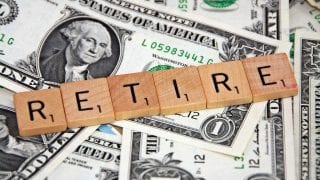In my previous article, I briefly described the three main financial statements — the Statement of Earnings, the Statement of Financial Position and the Statement of Cash Flows — that income investors should understand as information sources for selecting retirement income equities.
While companies must file all three statements regularly, the first two statements provide only a few pieces of useful information for dividend income investors. Because the Statement of Cash Flows is most useful for retirement income investors, I will provide additional information about that financial statement.
The Statement of Cash Flows (SCF) has three major sections and one minor section.
-
Net Cash Flow from Operations
There are two ways to calculate the Cash Flow From Operations (CFFO). The Direct Method is an accounting of every dollar that flows into the organization and every dollar that flows out, regardless of the reason for the transaction. This is the method we use with our household checkbook or small business use who use a cash basis of accounting.
The Indirect Method begins with the Net Income from Continuing Operations from the earnings statement and then adjusts this for non cash flows events that are used to derive net earnings. These non-cash flow events include changes in accounts payable and accounts receivable, net gain from sale of assets, depreciation, amortization, asset write-downs and other adjustments that are usually the difference between accrual, or theoretical, and cash, or actual, accounting methods. While Whether the Indirect Method or the Direct Method of cash flow accounting is used, the resulting CFFO will be identical whichever of the two methods is used. For instance, 496 of the 500 stocks of the S&P 500 index use the Indirect Method.
The CFFO shows how much cash the company has available after paying for all ongoing operational expenses. Operational expenses are those the company pays to do business and include payroll, overhead, interest, insurance premiums, tax payments, cost of goods, research and development, marketing and all cash outlays involved with the ongoing operation of the company. The Generally Accepted Accounting Principles (GAAP) guidelines consider all interest and dividends the company receives on any of its investments as operational income. Additional items included in operational expenses are adjustments based on foreign currency exchange rates and one-time expenses, such as lawsuit settlements, unexpected repairs, penalties and fines, etc. The analogy is how much cash you have left in your household after you pay your monthly bills. Unlike the Statement of Earnings, the Cash Flow From Operations is not some theoretical amount in calculating retirement income. The Cash Flow From Operations is the actual cash you have left after paying all bills.
-
Net Cash Flow from Investing Activities.
The Net Cash Flow From (or used by) Investing Activities (CFFI) represents the amount the company paid that year for new business acquisitions, new capital equipment, intangibles like patents or copyrights, proceeds from the sale of capital assets net of selling expenses, purchase/net sale of another company’s stock or debt, etc. If the reported amount is negative, then this represents the company’s net investing expense, while if positive, this represents the net proceeds that resulted from the cash generated when the sale of assets exceeded the cash amount of new investments. The primary issue with CFFI cash is that the company is spending this cash with the express purposes of getting a return on this investment expenditure over its holding period, which is usually years.
A company analyzes the projected future net cash flows a potential new acquisition or investment might generate. If the analysis indicates that a new acquisition or investment has potential for increased future net cash flows to the acquiring company, the company will make the investment. The Statement of Cash Flows Investing Activities will include the amount of that investment net of any transaction costs. The management of the acquiring company will determine the ability of the new investment to generate the necessary increased Operational Cash Flows and whether it will produce the cash flows originally projected.
A failure to generate the projected return on investment generally will result in the inability to cover future dividends. Occasionally, even the investments based on the most meticulous analysis and forecasts can fail to produce the projected cash flows. While analysts and managers make every attempt to account for all variables, sometimes unforeseen circumstances change the parameters of the analysis and yield a different outcome. Some examples are unexpected expenses associated with the acquisition, regulatory changes, changes in the competition or changes in commodity prices. Unfortunately, many times egos can get too big because there is a certain prestige associated with being the biggest. Therefore, it is important for retirement income investors to regularly monitor the dividend to Net Operational Cash Flows payout ratio following major acquisitions. A gradually increasing payout ratio over the quarters following a major acquisition suggests that management night have bitten off more than they can manage, and it may be time to think of removing that stock from the retirement income portfolio.
The majority of the CFFI will be expended on Capital Expenditures — or CapEx. CapEx may be divided into ‘sustaining’, ‘maintenance’, ‘growth’ or ‘expansion’ CapEx. Many analysts will quote a company’s ‘Free Cash Flow’ as CFFO minus CapEx, and use this as a measure of a company’s ability to pay a sustaining dividend. However, although conceptually sound, I don’t recommend this as there is no standard for ‘CapEx’ and so analysts may use any measure of CapEx they wish and so this metric may vary widely between analysts.
-
Net Cash Flow from Financing Activities
The Cash Flow from Financing Activities CFFA) is the amount of cash that the company will raise from the issuance of new debt net of any debt that is redeemed, plus any equity sales net of any company stock that is bought back from either the market or institutional investors. This line item also includes capital raised from minority interests and rare events such as sale-lease backs and excludes all dividends paid — common and preferred. The CFFA number is usually positive, as it is needed to pay for most of the investing activities. A company that consistently shows a negative CFFA means the company is generating more in CFFO than the cash outflows of all distributions and all investing activities. The company may then use this ‘excess’ operational cash to retire debt, buy back stock, accrue cash or pay a special dividend.
Now that I have explained the main section contained in the Statement of Cash Flows, I will explain in my next article how to use the information from these sections to calculate some useful ratios that will help us determine dividend coverage — a company’s ability to pay its dividend.

Bruce Miller is a certified financial planner (CFP) and retirement income expert who also is the author of Retirement Investing for INCOME ONLY: How to invest for reliable income in Retirement ONLY from Dividends and IRA Quick Reference Guide.




